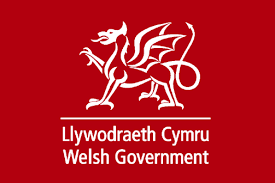2020-21 Spending Review and National Infrastructure Strategy
In his Spending Review statement today, Chancellor Rishi Sunak announced that borrowing is expected to reach £394bn for the current fiscal year (19% of GDP) which is the highest recorded level of borrowing in peacetime. He spoke of three priorities: getting the country through coronavirus, stronger public services and delivering record investment plans in infrastructure (including faster broadband for over five million premises in the UK and 4G mobile coverage to 95%). The government also confirmed £3bn for a three-year Restart programme to help a million people who have been unemployed for over a year to find jobs. A levelling up pot of £4bn will also be available for local infrastructure projects.
The long-awaited National Infrastructure Strategy (NIS) was also published today. The plans outlined will be financed by a dedicated bank, headquartered in the north of England. The bank will work with the private sector on projects from Spring 2021. Of key interest to BSG and its sponsors were the broadband-specific references. The NIS anticipates that more than half of all premises will have access to gigabit-capable connections by this time next year (despite Covid-19, currently a third of premises have access). However, the government expectation is now that the UK will reach a minimum of 85% gigabit-capable coverage by 2025, whilst the ambition is still to seek to accelerate roll-out further to get as close to 100% as possible by working to remove barriers to broadband deployment and maximise coverage in the hardest-to-reach areas.
Both the Spending Review statement and the NIS serve to underline the onus on industry to deliver gigabit-capable infrastructure. The minimum threshold of 85% gigabit coverage for the UK by 2025 set out today is predicated on the ability to spur on industry to accelerate infrastructure delivery to approximately 80% of the UK through commercial deployment. As has been underscored by BSG previously, this is heavily contingent on all the enabling barrier-busting legislation being in place alongside other facilitation with business rates relief, planning, wayleaves and streetworks. Additionally, of the £5bn government funding commitment to subsidise the hardest-to-reach areas with the BDUK ‘Outside-in’ programme, including with gigabit voucher schemes, the £1.2bn allocation for the period 2021-2024 clearly falls short of one of the previously anticipated BDUK intervention funding models, earmarking the total £5bn spend by 2025. This does not preclude further tranches of the £5bn from being in scope during this period, but it does suggest that the timescales for future procurement projects beyond the 85% target are some years further out.
BSG has always welcomed the £5bn committed by government to fund operators prepared to take on the challenge of the hardest-to-reach areas. The architecture of the ‘Outside-in’ procurement programme will be the determinant of whether the public funding intervention accelerates or hinders deployment and the models BDUK has put forward reflect this. In one scenario, completion was earmarked for 2029 which is four years beyond the 2025 ambition. Delivery vehicles established between central government and local government agencies would need to achieve a level of co-operation and collaboration that matches the level of ambition that government has set over the next five years.





